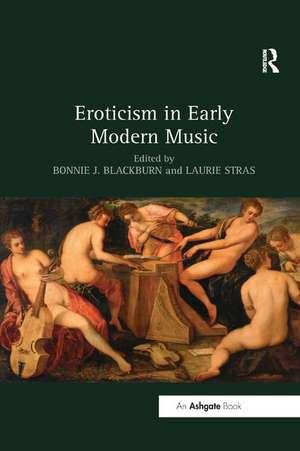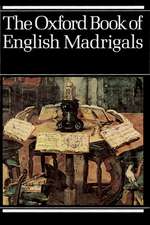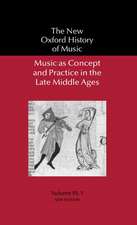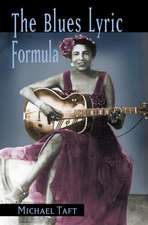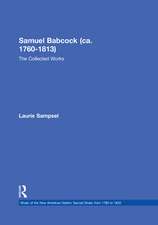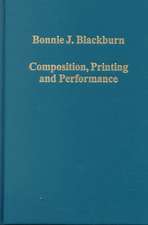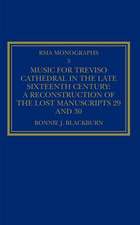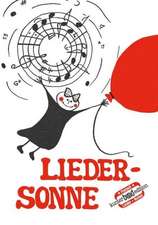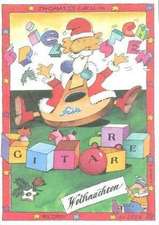Eroticism in Early Modern Music
Autor Bonnie Blackburn, Laurie Strasen Limba Engleză Paperback – 12 oct 2017
| Toate formatele și edițiile | Preț | Express |
|---|---|---|
| Paperback (1) | 449.41 lei 6-8 săpt. | |
| Taylor & Francis – 12 oct 2017 | 449.41 lei 6-8 săpt. | |
| Hardback (1) | 1010.53 lei 6-8 săpt. | |
| Taylor & Francis – 28 mar 2015 | 1010.53 lei 6-8 săpt. |
Preț: 449.41 lei
Nou
Puncte Express: 674
Preț estimativ în valută:
86.02€ • 89.46$ • 72.08£
86.02€ • 89.46$ • 72.08£
Carte tipărită la comandă
Livrare economică 14-28 martie
Preluare comenzi: 021 569.72.76
Specificații
ISBN-13: 9780815365594
ISBN-10: 0815365594
Pagini: 328
Dimensiuni: 156 x 234 x 25 mm
Greutate: 0.45 kg
Ediția:1
Editura: Taylor & Francis
Colecția Routledge
Locul publicării:Oxford, United Kingdom
ISBN-10: 0815365594
Pagini: 328
Dimensiuni: 156 x 234 x 25 mm
Greutate: 0.45 kg
Ediția:1
Editura: Taylor & Francis
Colecția Routledge
Locul publicării:Oxford, United Kingdom
Cuprins
Contents: Preface; Introduction: encoding the musical erotic, Laurie Stras; The lascivious career of B-flat, Bonnie J. Blackburn; Fa mi la mi so la: the erotic implications of solmization syllables, Leofranc Holford-Strevens; Unmasking salacious subtexts in Lasso’s Neapolitan songs, Donna G. Cardamone; Imitating the rustic and revealing the noble: masculine power and music at the court of Ferrara, Melanie L. Marshall; ‘The Ways’ (I Modi) of black-note erotica, Vanessa Blais-Tremblay; ‘Non è sì denso velo’: hidden and forbidden practice in Wert’s Ottavo libro de madrigali a cinque voci (Venice: Gardano, 1586), Laurie Stras; ‘Lo Here I Burn’: musical figurations and fantasies of male desire in early modern England, Linda Phyllis Austern; Ovid’s ironic gaze: voyeurism, rape, and male desire in Cavalli’s La Calisto, Wendy Heller; ‘Precious’ eroticism and hidden morality: salon culture and the mid-17th-century French air, Catherine Gordon-Seifert; Eroticized mourning in Henry Purcell’s Elegy for Mary II, O dive custos, Alan Howard; Index.
Notă biografică
Bonnie J. Blackburn, FBA, is a Member of the Faculty of Music at Oxford University and affiliated with Wolfson College. She specializes in music and music theory of the fifteenth and sixteenth centuries, with a particular interest in compositional practice, early printing, and notation. Her monograph Music for Treviso Cathedral in the Late Sixteenth Century was published by Ashgate (1987) and a collection of her essays was also published by Ashgate in 2000, Composition, Printing and Performance. She has edited the music of Johannes Lupi and two volumes for the New Josquin Edition. Together with Edward E. Lowinsky and Clement A. Miller, she edited A Correspondence of Renaissance Musicians, and since 1993 she has been General Editor of the series Monuments of Renaissance Music. She is also the author, together with Leofranc Holford-Strevens, of The Oxford Companion to the Year.
Laurie Stras is Professor of Music at the University of Southampton, UK. She is editor of She’s So Fine: Reflections on Whiteness, Femininity, Adolescence and Class in 1960s Music (Ashgate, 2010) and the author of numerous articles and chapters on the music of sixteenth-century Italy and twentieth-century America. She is currently completing a monograph on the female musicians at the court and in the convents of sixteenth-century Ferrara; she is co-director of the early music ensemble Musica Secreta and the female-voice choir Celestial Sirens.
Laurie Stras is Professor of Music at the University of Southampton, UK. She is editor of She’s So Fine: Reflections on Whiteness, Femininity, Adolescence and Class in 1960s Music (Ashgate, 2010) and the author of numerous articles and chapters on the music of sixteenth-century Italy and twentieth-century America. She is currently completing a monograph on the female musicians at the court and in the convents of sixteenth-century Ferrara; she is co-director of the early music ensemble Musica Secreta and the female-voice choir Celestial Sirens.
Recenzii
Winner of the Society for the Study of Early Modern Women (SSEWM) award for the best collaborative project on women and gender, 2015.
'This eye-opening collection, long and eagerly awaited, helps clarify why musicians enjoyed such a bad reputation for so long (and in some cases deserved it). Its diverse and impressive scholarship, often amusing and arcane, prompts readers to rehear and rethink a broad range of "early music", both familiar and unfamiliar, and tempts them perhaps even to perform some of it (in the privacy of their own homes).' Craig Monson, Washington University in St Louis, USA
Winner of the Society for the Study of Early Modern Women (SSEWM) award for the best collaborative project on women and gender, 2015.
'This eye-opening collection, long and eagerly awaited, helps clarify why musicians enjoyed such a bad reputation for so long (and in some cases deserved it). Its diverse and impressive scholarship, often amusing and arcane, prompts readers to rehear and rethink a broad range of "early music", both familiar and unfamiliar, and tempts them perhaps even to perform some of it (in the privacy of their own homes).' - Craig Monson, Washington University in St Louis, USA
“This book should be recognized as a trailblazing contribution to a fascinating field of research.” - Tim Shephard, University of Sheffield, Renaissance Quarterly
“In sum, Eroticism in Early Modern Music significantly enriches our understanding of musical eroticism during the early modern era” - Amanda Eubankswinkler, Syracuse University, Music and Letters
"This volume makes a welcome contribution to the study of eroticism and music in the early modern period." - Mariusz Bęcławski, Kozminski University, Poland in in Parergon: Journal of the Australian and New Zealand Association for Medieval and Early Modern Studies, volume 33.1 (2016).
'This eye-opening collection, long and eagerly awaited, helps clarify why musicians enjoyed such a bad reputation for so long (and in some cases deserved it). Its diverse and impressive scholarship, often amusing and arcane, prompts readers to rehear and rethink a broad range of "early music", both familiar and unfamiliar, and tempts them perhaps even to perform some of it (in the privacy of their own homes).' Craig Monson, Washington University in St Louis, USA
Winner of the Society for the Study of Early Modern Women (SSEWM) award for the best collaborative project on women and gender, 2015.
'This eye-opening collection, long and eagerly awaited, helps clarify why musicians enjoyed such a bad reputation for so long (and in some cases deserved it). Its diverse and impressive scholarship, often amusing and arcane, prompts readers to rehear and rethink a broad range of "early music", both familiar and unfamiliar, and tempts them perhaps even to perform some of it (in the privacy of their own homes).' - Craig Monson, Washington University in St Louis, USA
“This book should be recognized as a trailblazing contribution to a fascinating field of research.” - Tim Shephard, University of Sheffield, Renaissance Quarterly
“In sum, Eroticism in Early Modern Music significantly enriches our understanding of musical eroticism during the early modern era” - Amanda Eubankswinkler, Syracuse University, Music and Letters
"This volume makes a welcome contribution to the study of eroticism and music in the early modern period." - Mariusz Bęcławski, Kozminski University, Poland in in Parergon: Journal of the Australian and New Zealand Association for Medieval and Early Modern Studies, volume 33.1 (2016).
Descriere
This collection contributes to a small but significant literature on music, sexuality, and sex in sixteenth- and seventeenth-century Europe. Contributors employ a variety of different approaches to the repertoire: musical and visual analysis; archival and cultural history; gender studies; philology; and performance. By confronting musical, literary, and visual sources with historically situated analyses, the book shows how erotic life and sensibilities were encoded in musical works. It will be of value to scholars of early modern European history and culture, and more widely to a readership interested in the history of eroticism and sexuality.
